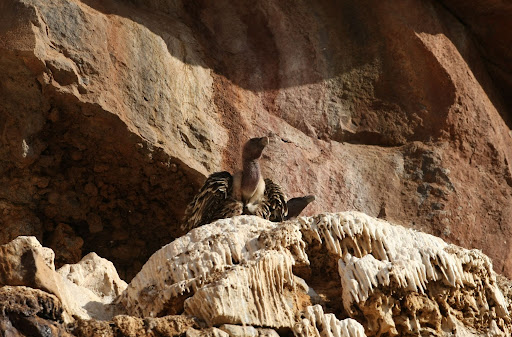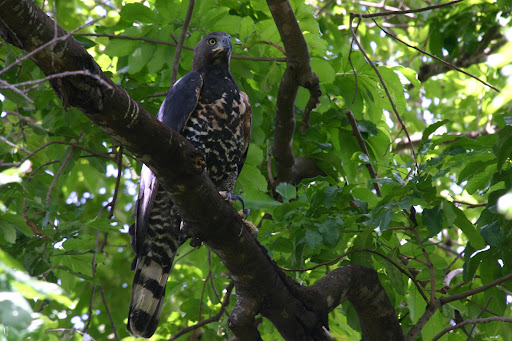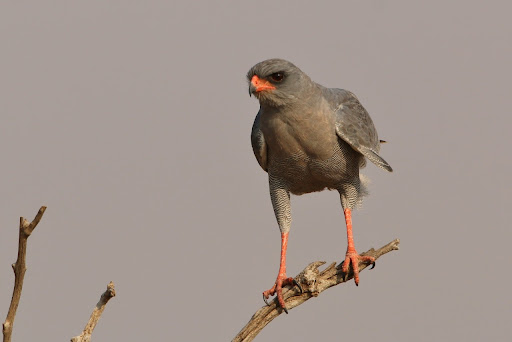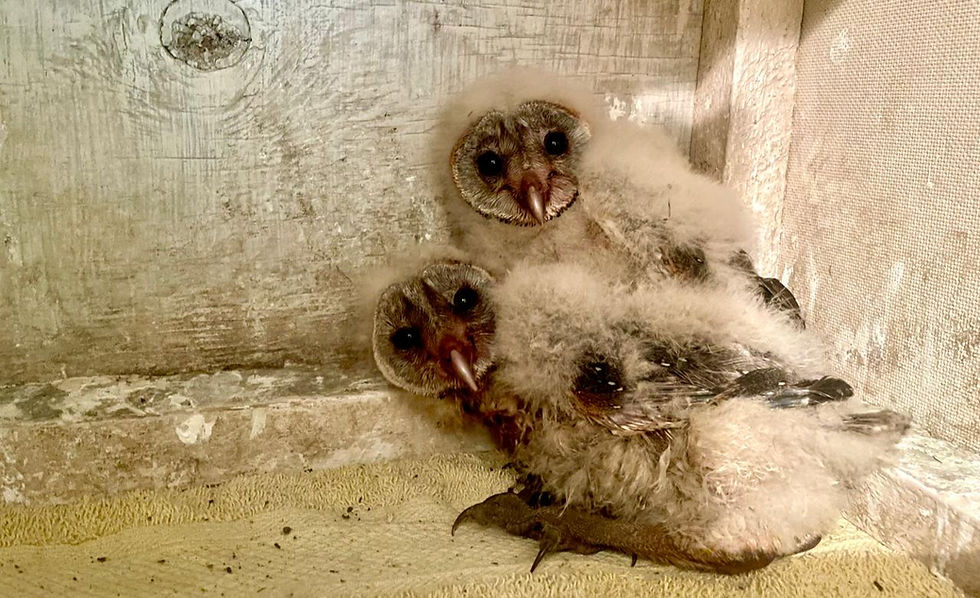Kenya's staggering diversity of raptor habitats
- Shiv Kapila

- Oct 4, 2021
- 7 min read
Updated: Oct 7, 2021
For World Habitat Day on the 4th of October, we’d like to highlight the important environments that hold the bulk of our raptor populations; species with different ecologies prefer different habitats and environments and as Kenya has a mix and blend of everything from Cities to Coasts to rolling Grasslands, we therefore have a staggering diversity of species that fit into each habitat, which all need protecting.
The climate crisis is widely recognised as the number one threat facing the world today – and the situation is urgent. Our cities and towns are responsible for the bulk of this change, resulting in flooding, droughts and violent storms. Cities produce around 70% of our greenhouse gasses. Unless we take urgent action, our urban spaces and their demands and outputs will increase our global average temperatures above a certain threshold, imperilling all of our other wild habitats. For this annual World Habitat Day, we want to highlight those other areas where wild raptors continue to exist, but will only thrive through our restorative action.
Mountains and Cliffs
These are amongst the most important biomes we have, and some of the most threatened. A variety of species of raptor only breed and hunt on cliffs and mountains – they specialise on hyrax and other cliff-based prey, and are biologically programmed to nest on cliff ledges. Crucially, these habitats take a tiny amount of space – just like a high-rise in New York City, that can house thousands of people in an area covering a couple of acres; cliffs appear as a line on a map, yet can hold tens or hundreds of pairs of Rüppell’s Vultures, dozens of pairs of Lanner and Peregrine Falcons and Verreaux’s Eagles.
By their nature, cliffs and mountains are hard to degrade or destroy by farming and urbanisation, but the surrounding habitat can make them uninhabitable. We’re dealing with this kind of battle at Hell’s Gate National Park and the Kwenia cliffs in southern Kenya, which we are trying to protect in perpetuity for the nesting raptors there.
Through climate change, certain species’ ranges are becoming smaller. As temperatures increase, cold weather species are being pushed higher and higher onto mountaintops – birds like Mackinder’s Eagle Owls and Lammergeyers are soon going to find that their preferred habitats don’t exist anymore.
Forests
Our forests are hugely threatened – forest cover in Kenya has declined from about 12% at independence in 1963, to about 2% now, due to the charcoal industry, and clearing to produce better grazing for livestock. As such, our forest raptors are amongst the most threatened of the lot. Highly specialised, capable of taking large prey, needing seclusion and little disturbance to breed, as well as requiring large tracts of forest with high prey densities, our forest Eagles, Hawk Eagles and Accipiters are in great peril. The African Crowned Eagle (one of KBoPT’s flagship species), capable of taking down a full-grown bushbuck, is now highly threatened and declining steeply. Ayre’s Hawk Eagles, always rare, are rarer still.
Projects like the Eburru and Aberdare fencing schemes, funded by the Rhino Charge, help hugely, but are relatively small scale, and concentrated on protecting already-protected areas, rather than generating new ones. Plant a tree. Or hundreds, if you can. Throw out a few kilos of Seedballs wherever you travel. You’ll not only be saving our forest raptors, but by sequestering carbon, you’ll be helping save the planet.
Savannah/Grassland
As savannahs and grasslands are relatively easy to convert into farmland, they are by the thousands of acres every year. The Mara, for example, used to be ten times its size in the 1970s, and now most of that is under wheat. Several species that specialise in savannah and grassland ecosystems such as the Secretary Bird, Bateleur, Martial Eagle have all be uplisted to Endangered this year, with a high risk of extinction in the wild. Grasslands support huge populations of their prey base (gamebirds, small antelope, rodents, reptiles) that these birds depend on, and that disappear when converted into monoculture wheat fields (follow and support The Mara Raptor Project for more on this kind of ecosystem).
Our vulture communities depend on savannahs to forage, and are mightily effective at it – 70% of the available carrion in these ecosystems are consumed by vultures, and a healthy vulture population effectively and efficiently controls diseases such as anthrax, botulism and rabies, indirectly. All of our vultures are classed as at least endangered, because of retaliatory poisoning – it’s unfortunate that our best wildlife savannahs are also the best grazing areas, and as livestock are predated on, predators are poisoned. It’s just happenstance that vultures bear the brunt of this when they come in and clean up.

Semi-arid to arid deserts
A seemingly tough and unforgiving habitat, certain species thrive on deserts, or near deserts. These are mostly our specialist reptile hunters. Here we have a wealth of Snake Eagles and open-country accipiters, such as the Chanting Goshawks. These species have been pushed into the snake and lizard hunting niche, in which they excel.
Unpredictable weather and human incursion do cause problems however, and one of the major threats is power transmission infrastructure – the new concrete power poles that are cropping up over our wild lands cause fatal electrocutions, as they’re the only vantage points in the region that these perch-hunting species gravitate to. Another threat that is easy to overlook in our drier parts are cattle troughs - increasingly, semi-arid deserts are colonised by livestock herders, who all need to water their cattle. Steep sided reservoirs attract thirsty raptors (and other species), to come and drink. A bird falling into a reservoir without an escape route quickly dies of exhaustion and drowning. A log placed halfway in usually fixes the problem – something simple, but can kill hundreds of birds in its absence.
Lakes, Rivers and sea shore
These are colonised by our more specialised birds of prey – Fish Eagles and Ospreys during the day, and highly threatened Pel’s Fishing Owls at night. Fish in a lake, river or sea also need to be exploited, and the aforementioned species have learned just how to do that. They have evolved polarised eyes (a theory…), spiny spicules on their feet, and a much lower requirement in terms of territory size. African Fish Eagles are one of the very few species that are doing well in their strongholds (Lakes Naivasha, Baringo, and on our larger rivers). They pose no threat to people or livestock, yet in certain places they actually help the local economy – in Naivasha, a fish sold to a photographer to feed the eagles gets bought for much more than one being transported to market. Ospreys, a migratory species, tend to be shyer and unobtrusive, and avoid people as best they can. Pel’s Fishing Owls, on the other hand, are highly threatened – they depend on thick, contiguous forest that border large, slow flowing rivers – and so the only spots you’re likely to find them (rarely) are in Meru National Park, the Mara, and Nairobi National Park.

Coastlines have been degraded by an invasive species that makes them less habitable for these guys – Indian House Crows; they take over and bully the local birdlife, and they must be stopped at all costs.
Farmland
This is where certain raptor species ecosystem services are felt most – in the control of pests such as rodents. Our ‘farmer’s birds’ collection in Kenya include Augur Buzzards, Long Crested Eagles, Spotted Eagle Owls, Black Shouldered Kites…the guys that, by and large, specialise on rodents. They’ve attended ploughed fields ever since a plough was first used here, and they do an efficient job in keeping the numbers of rats and mice to a manageable level. A truly commensal lot. They pose no conflict, take no livestock, but just help in their own ways. The normal gent has never had cause to gripe over what they do. The issue here is our power infrastructure and its way of delivering power to the rural masses. Previously, the old eucalypt posts were fine in doing this job. The new concrete poles are lethal, however. Metal rods are implanted in them for stabilisation, which makes electrocution not only easier, but inevitable. We have a legion of Augurs in for electrocution related injuries, that will never be released again, and a once common group of species will likely be Critically Endangered within the next decade.
Owls do the same thing at night as Buzzards do during the day – let them do it on their own. We condemn the use of rat poisons; they’re ineffective, and cause much more mortality amongst their predators by secondary poisoning. Get in touch and we’ll send you designs so you can build your own owl boxes and enjoy the free pest-control services they provide, as well as the enjoyment and satisfaction that you’ll get from watching ‘your’ owls grow up in the box you provided for them.
Towns and Cities
There are a select few species that have learned and adapted to work with, and benefit from humans in our own realm. These are few, but immensely useful. What did a Barn Owl do before barns were built? They certainly appreciate our help after we invented barns. Black kites also thrive in towns – scavenging what others won’t eat. Hooded vultures in west and central Africa attend slaughterhouses and dumps, helping out in their own way to help reduce the bulk of our waste. Can we keep helping them out?
Nairobi, the ‘green city in the sun’ is a great nesting and foraging spot of thousands of kites, and the great cities of India used to hold hundreds of thousands of Vultures, all mostly gone now leading to the detriment of overall hygiene. They performed a function, which is now only missed when they’re gone.
The point here is, everything has its place, and they’ve found it after millions of years - birds are the only living relatives of dinosaurs - and if we meddle with this delicate balance, it may take millions more years to get things back together again.
Photo credits:
Mountains and Cliffs: Rüppell’s Vulture and Lammergeyer by Simon Thomsett ; Verreaux’s Eagle chick and Mackinder's Eagle Owl by Stratton Hatfield;
Forests: African Crowned Eagle by Simon Thomsett; Ayre’s Hawk Eagle by Nick Trent
Savannah/grassland: Secretarybird by Shiv Kapila; Martial Eagle by Nick Trent; Bateleur by Stratton Hatfield; Rüppell’s Vultures by Lemein Par
Semi-arid to arid deserts: Dark Chanting Goshawk by Stratton Hatfield; Black-chested Snake Eagle by Nick Trent
Lakes, Rivers and sea shore: Fish Eagle by Shiv Kapila; Harassing house crows by Nick Trent
Farmland: Long Crested Eagles by Stratton Hatfield; Spotted Eagle Owl by Shiv Kapila
Towns and Cities: Black Kite and Barn Owl by Shiv Kapila.
Wish to learn more, visit our website and join us on Facebook and Instagram.
Kenya Bird of Prey Trust
Understand - Protect - Restore








































Comments